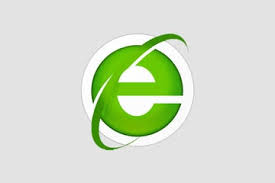How the Gig Economy is Changing Traditional Business Plans
Business plans are no longer written the way they used to be. In the past, a business plan focused on full-time staff, long-term roles, and fixed budgets. It was a guide meant for businesses that followed one model: hire a team, open a location, and run every part in-house. But the rise of the gig economy has changed that.
Today, many businesses use short-term help, freelance workers, and remote services. These changes are forcing business plans to become more flexible, more task-focused, and more digital. Planning now includes fast shifts, moving teams, and short goals. The gig economy has created a new way of working, and the business plan must match. To stay useful, a modern business plan must reflect the new reality of flexible work and fast change.
Also Read: Reddit Upvotes Affect Search Engine Rankings Seo
Key Areas Where the Gig Economy Is Reshaping Business Planning
The gig economy is not just about different jobs, it is about a different system. Business plans must now fit a world where workers are temporary, hours are flexible, and goals change often. Old planning methods focused on control and structure. New methods focus on speed and adaptation. Below are eight major areas where traditional planning is being replaced or reshaped by gig economy thinking.
1. Job Descriptions Have Become Task Lists
In traditional plans, each job had a title and set duties. Now, business plans break work into smaller tasks, each done by different people. Workers are picked based on what needs to be done today, not based on a fixed role. This change makes the business plan more focused on output and less on hierarchy. It also shortens the hiring process and lowers long-term costs.
2. Payroll Planning Has Shifted from Salaries to Service Payments
Earlier business plans included full-time salaries and fixed benefits. Today’s business plans often include hourly rates, one-time project payments, or gig fees. This shift makes payroll sections more flexible and easier to change. It also changes how budgets are tracked, with a focus on service-based spending, not employment costs.
3. Operations Sections Now Include Remote Workflows
Operations in old business plans described office hours, physical space, and in-house tools. Now, business plans explain how teams connect online, share files, and meet virtually. Remote tools have replaced office layouts. Planning now includes how to keep track of workers who may never visit a company building.
4. Hiring Plans Focus on On-Demand Talent
Traditional business plans listed when to hire full-time roles over time. Gig economy business plans show how to bring in help only when needed. The focus is on getting the right person for the right job, for the right amount of time. This saves money and increases speed, which is key for new and small businesses.
5. Timelines Are Designed Around Short-Term Results
Old business plans set yearly or multi-year goals. Gig economy business plans focus on what must happen in the next few weeks or months. Each step leads to the next quick win. This makes timelines more flexible and keeps businesses moving, even as goals change fast.
6. Success Metrics Shift from Long-Term KPIs to Immediate Deliverables
Before, success meant hitting big targets like yearly revenue or market share. Now, success is often measured by task completion, customer response, or short-term growth. The business plan must list simple, clear results that can be tracked in days or weeks, not quarters or years.
7. Training Sections Are Replaced by Simple Onboarding
Earlier business plans included training programs and career development plans. Gig workers do not need long training. Instead, the business plan includes fast guides, checklists, and clear tasks. This saves time and helps workers get started quickly. Onboarding becomes part of operations, not HR.
8. Management Style Is Now Collaborative and Light-Touch
Traditional business plans described top-down leadership. Now, business plans include tools for open communication, shared tasks, and flexible teams. Managers guide, not control. The business plan reflects this by showing how people will work together without being in the same place or under constant supervision.







